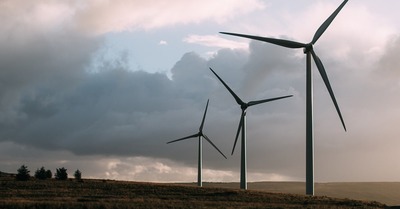2023 saw a step change in renewable capacity additions, driven by China’s solar PV market. Global annual renewable capacity additions increased by almost 50% to nearly 510 gigawatts (GW) in 2023, the fastest growth rate in the past two decades–± the International Energy Agency (IEA) said in a report.
This is the 22nd year in a row that renewable capacity additions set a new record. While the increases in renewable capacity in Europe, the United States and Brazil hit all-time highs, China’s acceleration was extraordinary. In 2023, China commissioned as much solar PV as the entire world did in 2022, while its wind additions also grew by 66% year-on-year. Globally, solar PV alone accounted for three-quarters of renewable capacity additions worldwide.
The world is on course to add more renewable capacity in the next five years than has been installed since the first commercial renewable energy power plant was built more than 100 years ago. In the main case forecast in this report, almost 3 700 GW of new renewable capacity comes online over the 2023вАС2028 period, driven by supportive policies in more than 130 countries. Solar PV and wind will account for 95% of global renewable expansion, benefiting from lower generation costs than both fossil and nonвАСfossil fuel alternatives.
Over the coming five years, several renewable energy milestones are expected to be achieved:
- In 2024, wind and solar PV together generate more electricity than hydropower.
- In 2025, renewables surpass coal to become the largest source of electricity generation.
- Wind and solar PV each surpass nuclear electricity generation in 2025 and 2026 respectively.
- In 2028, renewable energy sources account for over 42% of global electricity generation, with the share of wind and solar PV doubling to 25%.
Under existing policies and market conditions, global renewable capacity is forecast to reach 7 300 GW by 2028. This growth trajectory would see global capacity increase to 2.5 times its current level by 2030, falling short of the tripling goal. Governments can close the gap to reach over 11 000 GW by 2030 by overcoming current challenges and implementing existing policies more quickly. These challenges fall into four main categories and differ by country: 1) policy uncertainties and delayed policy responses to the new macroeconomic environment; 2) insufficient investment in grid infrastructure preventing faster expansion of renewables; 3) cumbersome administrative barriers and permitting procedures and social acceptance issues; 4) insufficient financing in emerging and developing economies. This report’s accelerated case shows that addressing those challenges can lead to almost 21% higher growth of renewables, pushing the world towards being on track to meet the global tripling pledge.
In 2023, spot prices for solar PV modules declined by almost 50% year-on-year, with manufacturing capacity reaching three times 2021 levels. The current manufacturing capacity under construction indicates that the global supply of solar PV will reach 1 100 GW at the end of 2024, with potential output expected to be three times the current forecast for demand. Despite unprecedented PV manufacturing expansion in the United States and India driven by policy support, China is expected to maintain its 80вАС95% share of global supply chains (depending on the manufacturing segment). Although developing domestic PV manufacturing will increase the security of supply and bring economic benefits to local communities, replacing imports with more expensive production in the United States, India and the European Union will increase the cost of overall PV deployment in these markets.















